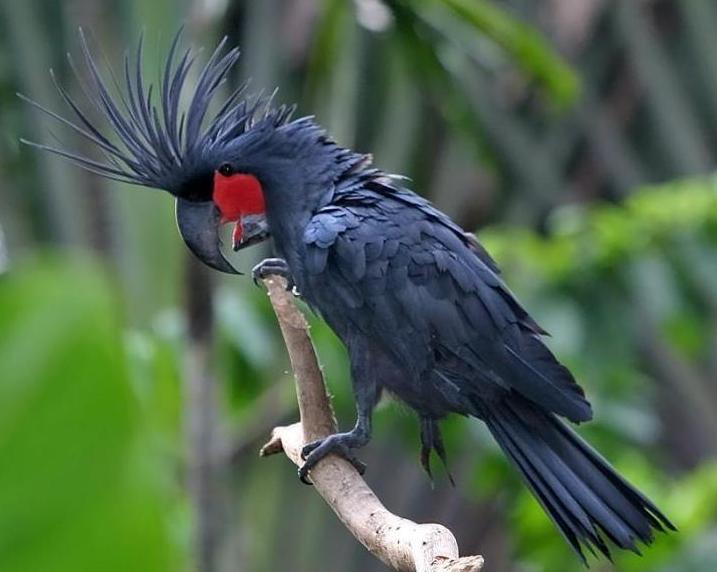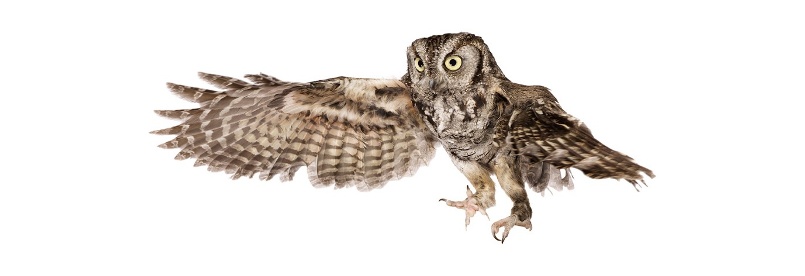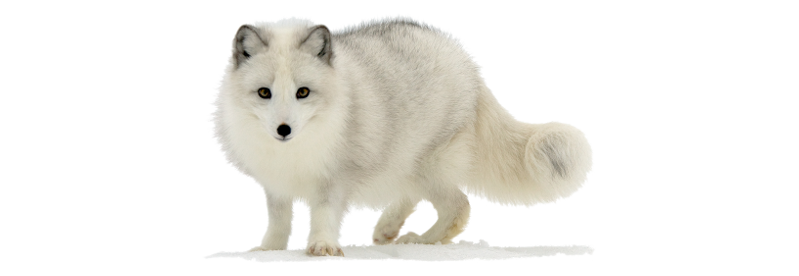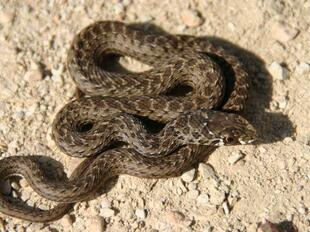
Palm cockatoo, orGoliath cockatoo, orGreat black cockatoo(Probosciger aterrimus)
Phylum —chordata
Class — aves
Order — psittaciformes
Family — cacatuidae
Genus – probosciger
Appearance
The Palm cockatoo is 55 to 60 cm (22 to 24 in) in length and weighs 910–1,200 g (2.01–2.65 lb). It is a distinctive bird with a large crest and has one of the largest bills of any parrot. This powerful bill enables Palm cockatoos not only to eat very hard nuts and seeds, but also enables males to break off thick (about 1 in) sticks from live trees to use for a drumming display. The male has a larger beak than the female. The beak is unusual, as the lower and upper mandibles do not meet for much of its length, allowing the tongue to hold a nut against the top mandible while the lower mandible works to open it. The Palm cockatoo also has a distinctive red cheek patch that changes color when the bird is alarmed or excited.
Habitat
The Palm cockatoo inhabits New Guinea and the northern Queensland’s Cape York Peninsula, and also an area near Sorong in West Papua.
Behavior
Palm cockatoos are found alone, in pairs, or in larger groups. Sometimes they stay quite close by their nesting sites, but they can travel a long way to search for food or water. A few trees for nesting sites are included within their territory. They visit these sites during the year for a variety of reasons, increasing the visiting frequency in the breeding season. Often they feed in big groups, one "sentinel" bird watching out for predators. Should a predator or another threat appear, the “sentinel” makes an alarm cry to warn the flock. These cockatoos are highly social birds, gathering early in the day in groups in their favorite locations to spend time interacting and preening. They roost during the day near sources of food or water and at night they roost in or nearby a nest tree. During the rain they can be found, as if taking a shower, hanging upside down, stretching out their wings and tails.
Diet
Palm cockatoos eat mainly leaf buds, fruits, and seeds. They also sometimes consume insects and their larvae.
Reproduction
Palm cockatoos are monogamous and pairs stay together for life. Breeding usually takes place from August to January, but can vary with the local climate. These birds are not able to excavate nesting cavities, so they make use of cavities that have been hollowed out in big trees, such as palms. Year after year the same site is often used. Palm cockatoos lay a single egg per clutch, and incubation is carried out by both parents for between 30 and 33 days. Chicks fledge in 100 to 110 days, the longest fledgling period of any parrot. Once it has left the nest, the fledgling is dependent on its parents for at least 6 more weeks, due to its inability to fly. Then the young bird will have reached independence, but will remain relatively close to its parents until the next mating season. Young birds are sexually maturity at the age of 7 to 8.
In captivity
Captive cockatoos may live to more than 100 years old.
Palm cockatoos should not be left alone for more than eight hours a day. This species is not the right choice if you maintain regular obligations outside of the home for long periods.
The Palm cockatoo requires a large enough cage to accommodate flight and play. The cage should be at least 10 feet long, 6 feet wide, and 6 feet high. If you cannot accommodate a cage this size or an aviary, it is best to consider one of the smaller cockatoo species.
These powder-down parrots enjoy baths and should regularly get the opportunity to get wet. The natural dust shed by this bird can coat the nearby surfaces and trigger allergies for those sensitive to dust or animal dander.
Being large birds, they need lots of exercise to maintain their physical health. Make sure that your bird is allowed a minimum of three to four hours outside of its cage each day so it can stretch its muscles, play, and socialize with you. These birds require regularly scheduled time for training.
These birds are curious. Make sure you supervise them when outside of the cage to prevent accidents and unwanted chewing on your household goods, furniture, or walls. Be mindful of electric wires around the house; these are potentially hazardous if your bird chews on them.
Toys provide enrichment and will keep the bird occupied. Provide plenty of stimulation with wood toys, ropes, and other things the bird can chew on. Always have more toys readily available when they get destroyed. Rotate toys in and out as the bird loses interest. Playstands, perches, ladders, and swings can also help your bird burn off excess energy.
Like all cockatoos, Palm cockatoos can easily become overweight, so owners should carefully supervise their fat intake. Half of its menu should consist of high-quality pellets, and the other half should be fresh bird-safe fruits and vegetables. Occasionally feed nuts in the shell; this will exercise their beak. Keep nuts to a minimum, though, as most are high in fat. Start by offering your bird 1/3 cup of pellets and 1/3 cup of fruits and vegetables daily. Increase the amount as needed. Never feed chocolate or avocado; these foods are toxic to birds.
 Russian
Russian
 English
English
























